










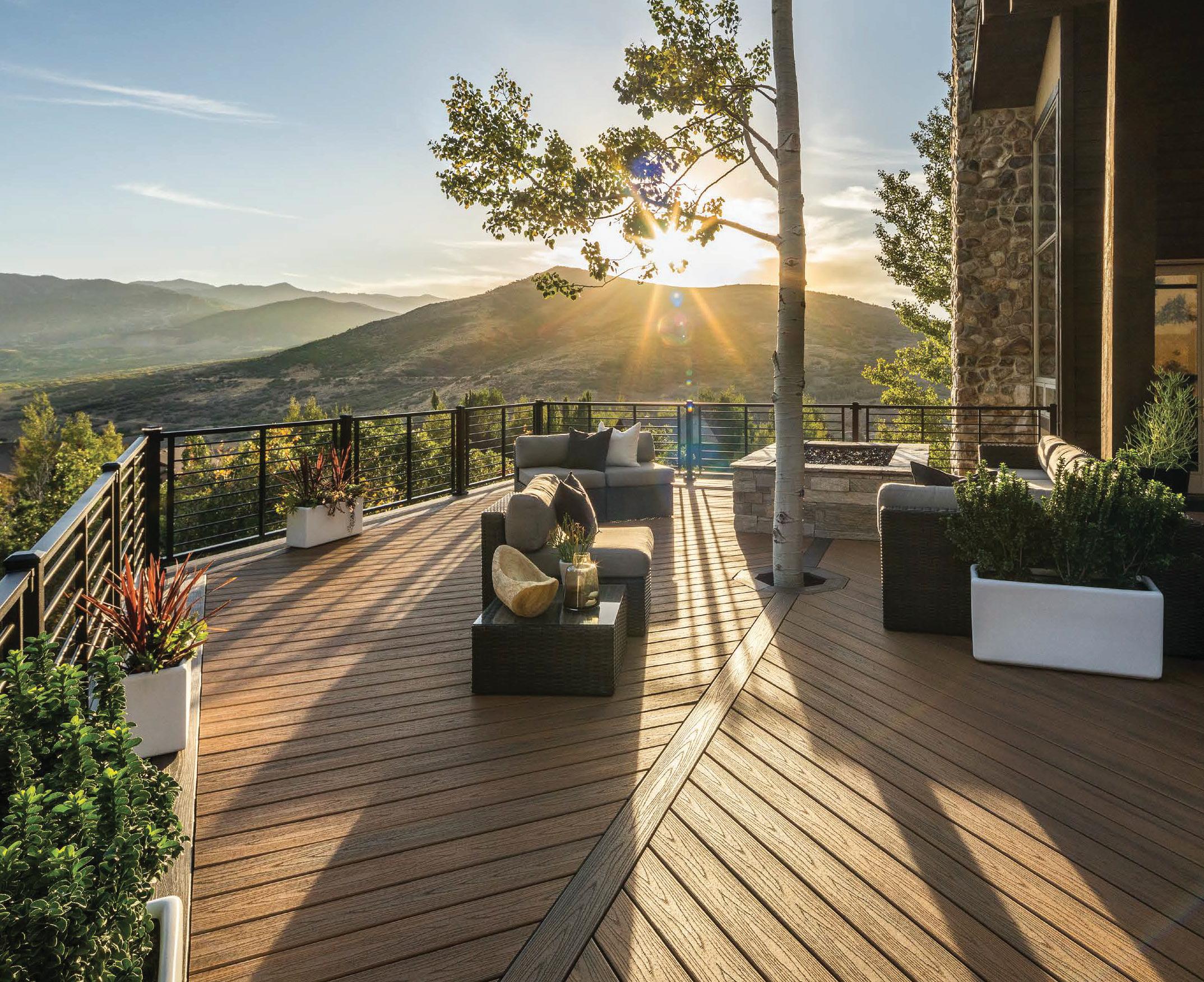















By Kathi Caldwell-Hopper
All over the country, we set aside a day to honor those who serve/served in many branches of the military. These brave people ensure our safety and freedom. In the Lakes Region, veterans are remembered and honored at ceremonies in individual towns.
In Wolfeboro, a Veteran’s Day ceremony will take place on November 11 at 11 a.m. at the Wright Museum, located at 77 Center Street in Wolfeboro. There will be a speaker, bagpiper, and Boy Scouts participating. The public is invited to attend the ceremony. For information call 703-798-8978.
The Laconia VFW Post 1670 will have a ceremony on November 11 at 10 a.m. at the monument in downtown Laconia. Plans are underway; to verify the exact time of the service, call 603524-9725.
Meredith will hold a Veteran’s Day ceremony on November 11 with a 10 a.m. parade in the downtown, marching to the Meredith Public Library at 91 Main Street. There will be a speaker and various political representatives attending followed by a free luncheon at the American Legion Post 33 on Plymouth Street in Meredith. The public is invited to attend. Call 603-677-7030.
From the beginnings of the country, a variety of people have fought to maintain our freedom. One such person who served with courage was Civil War nurse Harriet Dame. Although born in Barnstead, New Hampshire in 1815, Dame lived a life of service far from her origins. She never married but continued to live with and care for her aging parents until their passing. In the 1850s, after her parents had died, Dame turned her family home in Concord into a boardinghouse.
The Civil War was soon to follow and Dame, like many women, wanted to serve. The best (and only way) for a woman to do so at the time was to be a nurse. Dame volunteered to work as a nurse in the 2nd New Hampshire Regiment from Concord. She had no formal medical training, but she learned fast (She nursed the soldiers until the group

disbanded in 1865.)
Dame’s medical skills made her a beloved mother figure to the soldiers. She worked in the camps at first, but when her Regiment fought in the battle of the First Bull Run, Dame insisted on being on the front lines, which was extremely dangerous. Knowing she was needed, Dame was willing to put aside her safety to help the wounded. Her service was risky and dangerous. At one point, Dame was captured by the Confederates and taken to be a spy. This nearly got her shot, but Confederate General Stonewall Jackson ordered her to be released.
Some in power looked upon her insistence to nurse those in her regiment with concern. She was denied a request to be at the front lines, saying it was “no place for a woman.” Dame was not willing to give in. She joined a team of doctors to attend the sick and wounded. She cared little for giving a ladylike appearance because her work was dirty and bloody. Genteel women found her ragged appearance to be offensive, but Dame found it amusing to see their horror when learning she was among the few women caring for the wounded soldiers.
After the war, Dame lived in Wash-







ington, D.C. and worked as a clerk and later became the president of the Army Nurses Association. She was forever an advocate for services to help war veterans, and she worked to fund the building of veteran’s homes. As a testament to her respect among the troops, over 600 soldiers signed a petition asking the United States Senate to give Dame a pension for her service. The Senate agreed, making Dame, the mother of all soldiers, among the few women to hold such an honor. Her portrait was hung in the New Hampshire State House after her death in 1900 Harriet Dame lives on through history as a mother figure and a nurse who saved many soldiers wounded in the war.
In Tilton, New Hampshire, wealthy Charles E. Tilton used some of his funds to erect monuments and statues throughout the town. In 1849, Mr. Tilton returned to New Hampshire from the western part of the country, where he made his fortune. It was his mission to beautify the town and with that in mind, he erected statues of historic figures and a monument to honor veterans.
Mr. Tilton donated a large granite stone base upon which a statue of a soldier was placed at the intersection of
Main and Winter Streets in Tilton. The carving on the stone is called Soldiers’ Monument, and it was dedicated in the spring of 1889. According to information at www.tiltonnh.org., funds for the bronze statue were raised through public subscription by the local GAR (Grand Army of the Republic) Post. This was not many years after the Civil War, and the soldiers lost in the conflict were never far from the minds of those left behind in towns such as Tilton. (Erecting monuments to the soldiers was a popular way to pay tribute.)
Also in the Tilton area, a home was built for veterans in the 1890s after legislation directed that a place be built to operate as a state-run Soldier’s Home. The legislation passed Congress in 1888, according to information at www.nh.gov/veterans
In the Lakes Region and throughout New Hampshire, as elsewhere in the country, veterans who served in the Civil War were dealing with chronic injuries and illness, such as amputations and what we know of today as post-traumatic stress disorder. Many needed medical help and a place to live. The idea of a Soldier’s Home was popular, and the search began to find a suitable location.
Once again, Charles Tilton helped. He gifted to the state a piece of property called the Savage Farm in Tilton. With around 30 acres in a rural setting, the property was a perfect place for a veteran’s home. It met the criteria of Governor David H. Goodell and the appointed Veterans’ Board of Managers. The criteria were the Civil War veterans admitted must not be able to care for themselves due to wounds, advancing age, or other medical issues.
The large building was made of red brick. As this was the decorative Victorian era, the architectural design had ornate touches. Furnishing such a large building was daunting, but the Women’s Relief Corps. raised $5,000.00 and put this money (a very large sum • Veterans continued on page 4

















































































































at the time) to good use purchasing furniture as well as hiring cleaners to make sure the home was spotless from top to bottom. The New Hampshire Soldiers’ Home was formally dedicated on December 3, 1890. At long last, the deserving veterans had a place to call home.
The first veterans admitted were from the corps of the Grand Army of the Republic, a fraternal organization of Union veterans from the Civil War. Information at the New Hampshire Veterans Home website tells us these veterans “lived out their lives in dignity in the red-brick Victorian ‘Fortress’ in the Highlands of Tilton.” As the years passed, the home welcomed veterans of many wars, and the structure expanded to meet the changing needs. In the 1970s, a 50-bed addition took the place of the 1890s original/main building. More beds and enlargements followed. The stories of just a few of the hundreds of deserving area veterans underscore the importance of providing shelter, medical care, and honoring those who served.
In the 1940s, a news clip in the Laconia Evening Citizen was titled “Car to Be Awarded at Armistice Ball”. The Wilkins-Smith Post of the American Legion hosted the ball at the State Armory. The ball had been an annual event since 1919 and eagerly anticipated by veterans. However, during World War II, the event was discontinued. The renewed ball after the war ended was the first Armistice Day observance (as it was then called) since the return of World War II soldiers. Entertainment was by Mal Hallet and his Co-
ca-Cola broadcasting orchestra, with soloist Rita Williams. The grand prize for the evening was a Plymouth Deluxe Sedan.
When World War II raged on, the Laconia Evening Citizen had such grim headlines as “Two Laconia Boys Missing in France”. Another story in the Evening Citizen reported that Capt. Sidney Thompson, of New York City, was visiting a relative in Wolfeboro. Sidney had recently been awarded a Purple Heart and a citation of merit. He served in the African campaign during World War II and must have enjoyed visiting the Lakes Region where it was quiet and peaceful. Women also served, such as Seaman Virginia Kirkland, who completed her basic training at Naval Training School. She was a graduate of the local Brewster Academy, as reported in the Evening Citizen
During World War II, men, and women from around the Lakes Region did their part, including Henry Allard of the Laconia area. He appeared on the front page of the Evening Citizen surrounded by his grandchildren. He was dressed in his military uniform, and the headline above the photograph read “Grandad Home After Long Service”. He served as a Machinist Mate on destroyer duty.
Those who served over the decades looked forward to coming home to the Lakes Region and likely remembered fun times swimming, boating, and fishing on Lake Winnipesaukee. After returning from war duty, a place at Weirs Beach where they could camp and socialize with fellow veterans must have been very welcome.
However, long before the First and Second World Wars, the Weirs Beach area was a good place for veterans to
Smiley Publishing Group, LLC dba Panoramic Publishing Group/The Laker
P.O. Box 119, Wolfeboro Falls, NH 03896
603-569-5257 in NH 1-800-339-5257 FAX 603-569-5258 pressreleases@thelaker.com • lkr@thelaker.com • www.thelaker.com




meet and renew acquaintances with others who fought in the Civil War. There is no doubt the war left many soldiers physically frail and mentally traumatized. After the war, veterans found comfort in talking over wartime experiences with fellow soldiers.
Recognizing the need for a place to allow veterans to gather and socialize, the Boston, Concord, and Montreal Railroad donated a piece of property near the railroad’s Weirs Beach station. It was a good location for a campground with scenic views and the quiet of the country would have been ideal for those who camped in the grove.
In 1878, the New Hampshire Veteran’s Association began holding annual multi-day reunions at Weirs Beach. The events were successful, offering a place for veterans to camp and enjoy being with old friends. Vets and their families vacationed at the Campground, with many in attendance. Trains were a popular mode of transportation, bringing politicians to areas where veterans gathered on special occasions. Large crowds of veterans and others gathered on Grand Army Day and Governor’s Day. Civil War generals and political leaders and hopefuls gave speeches and attended picnics and socials, adding to the camaraderie of the attendees.
In the early 1900s, popular politician and leader, President Theodore Roosevelt, attended the 26th annual reunion, and between 20,000 to 40,000 people came to hear him speak in the Weirs Beach area. The area was decorated with bunting and flags and the lake was filled with steamboats and other vessels and must have been an amazing sight.
A typical and festive event, for example, took place on a weekend in August of 1930. It was held at the New Hampshire Veteran’s Campground at Weirs Beach. The Reunion of the Grand Army of the Republic Spanish War, according to a printed piece by the New Hampshire Veteran’s Association, included a Spanish War and Veterans of Foreign Wars Day with a
PUBLISHER
Dan Smiley
ADVERTISING
Maureen Padula
PROD. MANAGER/ GRAPHIC DESIGN
Gina Lessard
COPY EDITOR
Charlene Muscatell
CIRCULATION
Kathy Larson

campfire, speeches, and music by the Laconia Municipal Band. Grand Army Day saw speakers and a campfire, and Woman’s Day featured Woman’s Auxiliary speakers, a Civil War reunion, and a campfire. The event closed with a Governor’s and American Legion Day “devoted to pleasure and the one feature a parade under the auspices of the New Hampshire Veteran’s Association,” related information about the event.
Alton, New Hampshire’s Savage House was purchased by veteran George Savage in 1850. Mr. Savage ran the large building as an inn until the late 1880s. Some years later, in 1914, his son, Henry Savage, bought the property in memory of his father, according to “Alton a Town to Remember”, published by the Alton Old Photograph Committee. Henry ran the inn until 1939, with some of the rooms furnished for the use of the Sons of Union Veterans and their families. Later, the Savage House became the American Legion Hall. (Major George Savage is pictured in the Alton a Town to Remember standing with his beloved horse, Old Tom. It is said that Old Tom once saved the Major’s life; the horse is buried in Alton’s Riverside Cemetery near his master.)
In the past, a special day in mid-November was known as Armistice Day. Today, November 11 is known as Veteran’s Day. No matter what the name may be, the day honors those who served. In dedication to veterans, area towns have monuments, lists of soldiers, and special buildings.
Armistice Day came into being on November 11, 1919. It honored the end of World War I, which took place on November 11, 1918. Congress passed a resolution in 1926 for an annual observance, and it became a national day on November 11, 1938, according to www.military.com. In 1954, the U.S. Congress changed the word “Armistice” to “Veterans”. November 11 was an official day to honor American veterans of all wars.









































































by Chef Kelly Ross
Happy November, my foodie friends! We have Thanksgiving right on top of us in a few weeks so there is a lot going on this month! Considering how busy we all seem to be and with the big holiday meal just ahead of us which requires many hours of prep and cooking time, today is dedicated to simple and delicious dinner comfort foods and casserole dishes for your families to enjoy so all of you moms and some dads out there can chill somewhat until the craziness of Turkey Day. My goal when sharing recipes is usually all about easy and yummy recipes and these will check both of those boxes. Let’s do this!
Like many of my favorite recipes, quite often, they are a take on something else and a few of these are just that. One of the most popular stuffed chicken dishes is chicken cordon bleu, which is one of my favorites. Well, this first dish is a meatloaf using a chicken cordon bleu mentality. Yup, this one uses ground chicken for the meatloaf and brings ham and Swiss into the equation to bring you one of my favorite meatloaf dishes ever. The fusion of the chicken, ham and melted Swiss will create a very comforting and unique dish for this time of year. This is made in the usual bread loaf pan so plan on getting 6-8 slices and this will take you about an hour and a quarter to make.
Chicken Cordon Bleu Meatloaf
1 lb ground chicken
1 cup breadcrumbs
½ cup grated Parmesan cheese
1 tsp garlic powder
1 tsp onion powder
1 tsp dried thyme
½ tsp salt

¼ tsp pepper
½ cup diced cooked ham
1 cup shredded Swiss cheese
2 eggs, beaten ¼ cup milk
½ cup chicken broth
Preheat the oven to 350 degrees and lightly grease a loaf pan. In a large bowl, combine ground chicken, breadcrumbs, Parmesan, garlic powder, onion powder, thyme, salt, and pepper. Add the eggs and milk, mixing until just combined. Layer half the meat mixture into the bottom of the loaf pan. Sprinkle diced ham and shredded Swiss cheese evenly over the meat, then top with the remaining meat mixture. Drizzle chicken broth over the top. Bake for


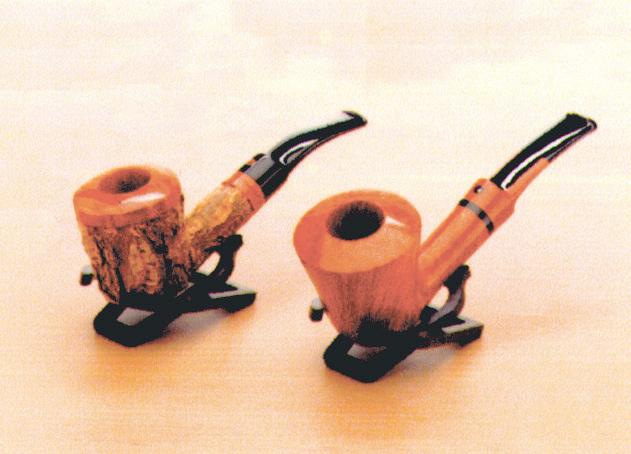

45-55 minutes, until cooked through and golden. Let it rest before slicing. Dig in and enjoy!
I’m going to throw another epic meatloaf dish your way, although done so in more of a casserole kind of way. Two of the most famous meals for me while I was growing up were meatloaf and mac and cheese, so why not combine the two? Those two dishes scream comfort food classics and the combo of the two is a game changer and a favorite for all ages when I make it. This innovative casserole brings together the creamy, cheesy goodness of mac and cheese with the hearty, savory flavors of meatloaf, creating a meal that is both satisfying and delicious. In
this dish, the meatloaf base is typically made from a blend of ground meats, such as beef and pork, mixed with breadcrumbs, eggs, and a variety of seasonings to enhance its flavor. This is then topped with a generous layer of creamy macaroni and cheese, which is prepared using tender pasta mixed with a rich cheese sauce. The combination is baked to perfection, resulting in a golden, bubbly crust on top and a moist, flavorful meatloaf beneath. Unlike the last meatloaf dish that was made in a loaf pan, this one is made in a 9x13 pan which will feed many more. The potpourri of fun ingredients in this dish is outstanding and the whole process is in the same ballpark as the last recipe. This recipe does contain a couple of “cheat” ingredients, but if you care to go more from scratch on this, I know you will figure it out quite easily. In other words, you do have options if you care to do so.
Mac and Cheese
Meatloaf Casserole
1 cup ketchup
1 cup of your favorite barbecue sauce
2 lbs lean ground beef
30 Ritz Crackers, crushed 2 oz Lipton onion soup mix
2 eggs
3 cups dry macaroni noodles
2 cups milk
1 can condensed cheddar cheese soup, 10 ½ oz
1 tsp salt
1 tsp pepper
1 tbsp garlic powder
1 tbsp onion powder
4 cups shredded mozzarella and
• ‘Cue The Grill continued on page 6

























cheddar cheese blend
Preheat the oven to 350 degrees. Grease a 9×13-inch baking dish. In a medium mixing bowl, combine the ketchup and barbecue sauce. Set it aside. In a large mixing bowl, add the ground beef and the crushed crackers, the Lipton onion soup mix and the eggs. Pour in ½ cup of the ketchup and barbecue sauce mixture. Mix all ingredients together until fully combined. Press the mixture evenly into the baking dish. Spread the remaining ketchup and barbecue sauce on top. Bake for 30 minutes. Meanwhile, cook the macaroni noodles according to package directions, then drain. In a large bowl, whisk together milk and condensed cheddar cheese soup until smooth. Add salt, pepper, garlic powder, and onion powder. Stir in cooked macaroni and 2 cups of shredded cheese. Remove the meatloaf from the oven. Pour the macaroni mixture on top and spread evenly. Sprinkle the remaining cheese on top. Bake for an additional 17-20 minutes, until the cheese is melted and starting to brown. Let sit for a few minutes before serving. This will be a big-time winner with your entire family. This next recipe is likely the most traditional of the bunch today as many of us have enjoyed this dish at some point in our lives, although not likely this exact recipe. A very popular combo in a casserole dish is chicken and broccoli and this is what we have right here. All in all, this is the healthiest of the day as chicken and broccoli are very healthy with a fabulous creamy sauce
that only takes 10 minutes to prep and another 35-40 minutes to cook. Plan on this feeding 8 of you.
Chicken Broccoli Casserole
For The Casserole
4 cups fresh broccoli florets
2 tbsp butter
2 lbs boneless skinless chicken breasts, cut into bite-sized pieces
½ tsp sea salt
½ tsp black pepper
2 cups shredded cheddar cheese
For The Sauce
¼ cup butter
1 cup chicken broth
1 cup heavy cream
1 tsp poultry seasoning
1 tsp garlic powder
¼ cup sour cream
1 tbsp Dijon mustard
Preheat the oven to 400 degrees. Place broccoli florets into a pot of boiling water. Simmer for 3-5 minutes, until crisp tender. Drain well and place in the bottom of a 9×13 baking dish. Set it aside. Season the chicken pieces with salt and pepper. Heat 2 tbsp of butter in a large skillet over medium heat. Add the chicken pieces in a single layer. Cook for 5-6 minutes per side until browned and cooked through. Remove from the skillet and stir into the baking dish with the broccoli. Set it aside. In the same skillet, make the sauce. Add the remaining ¼ cup butter, chicken broth, heavy cream, poultry seasoning and garlic powder to the skillet. Bring to a boil, then simmer for about 15 minutes, until the volume is reduced by ¼. Remove from heat. Stir in the sour cream and Dijon mustard, until smooth. Pour the sauce over the chicken and broccoli in the baking dish. Sprinkle


shredded cheese on top. Bake for 1015 minutes, until casserole is hot and cheese is melted. Dee-licious!
OK, so this one may seem weird, but it’s really good. Admittedly, I hate fast food restaurants and refuse to go to them for the most part. I think I have been to McDonalds 10 times in 30 years, always for a McMuffin when on the road in the morning. I have never had a Big Mac in my life, well until I ate this casserole for the first time. This one is a Big Mac casserole that I’ve been told tasted just like a Big Mac. It has ground beef and onions, tomato, pickles, Thousand Island dressing and topped with shredded lettuce once out of the oven. The only real difference between this and the sandwich is that instead of the bread used in the sandwich, the bottom layer of the casserole is sliced zucchini with gives this great added flavor and texture. It’s a great way to get your kids to eat their veggies. Plan for 45 minutes or so to make this and it will serve 8.
Big Mac Casserole
The Zucchini Layer
1 lb zucchini, sliced into ¼-inchthick rounds
2 tbsp olive oil
¼ tsp sea salt
The Meat Layer
½ tbsp olive oil
1 ½ lbs ground beef
½ tbsp sea salt
½ tsp black pepper
½ large onion, diced
The Rest
1 cup thousand island dressing, divided
2 cups cheddar cheese, shredded
1 ½ cups Iceberg lettuce, shredded 1 medium Roma tomato, diced ¾ cup pickles, sliced ½ tbsp sesame seeds
the meat mixture, then sprinkle with shredded cheese. Bake for 10-15 minutes, until the cheese on top is melted. Top the casserole with lettuce, tomatoes, and pickles. Drizzle with the remaining ¼ cup dressing. Sprinkle with sesame seeds.
Lastly today, this one is a copycat of one of my all-time favorite sandwiches, that being the classic Reuben. The combo of corned beef, sauerkraut, Swiss cheese and Thousand Island dressing on rye or marble rye is easily one the most popular restaurant sandwiches ever. As a casserole, it is just as awesome. This is another very easy to make and delicious to eat recipe that will again take you 45 minutes to make and will feed at least 8 of you. If sauerkraut isn’t your thing like many I know, I suggest sautéing 2 lbs of sliced onions, straining out the oil, and then using the onions instead of the kraut. You can always use a combo of the 2 as well.
Homemade Reuben Bake 8-10 slices rye or marble rye bread, cubed, about 4-5 cups ½ cup butter, melted
1 lb corned beef, cut into bite-sized pieces, not sliced
1 can sauerkraut, 16 oz, drained and rinsed
2 cups shredded Swiss cheese
½ cup Thousand Island dressing
2 tbsp chopped fresh parsley, optional
2 tsp caraway seeds, optional
Preheat your oven to 350 degrees. Grease a 9x13 inch rectangular baking dish. In a large bowl, toss the cubed rye bread with the melted butter until evenly coated. Spread half of the bread cubes evenly over the bottom of the prepared baking dish. Layer the corned beef over the bread cubes. Sprinkle the sauerkraut and/or onions over the corned beef. Distribute half of the shredded Swiss cheese on top of the sauerkraut. Drizzle the Thousand Island dressing evenly over the cheese layer. Sprinkle with chopped parsley and caraway seeds if you’re using. Top with the remaining bread cubes and shredded Swiss cheese. Bake for 30-35 minutes, or until the cheese is melted and bubbly and the bread cubes are golden brown on top. Let cool slightly before serving.
Well, that’s another batch of food fun in the books. On one of the many cold nights we have ahead of us, I hope you find some of these recipes worthy of cooking for the family. Until next time, keep your taste buds happy and smiling and if you care to reach out with any questions or feedback, touch base at fenwaysox10@gmail.com.
Preheat the oven to 400 degrees. Arrange the zucchini in a single layer on a large baking sheet. Brush with olive oil, then sprinkle both sides lightly with sea salt. Roast the zucchini slices in the oven for about 20 minutes, until tender. When done, remove the zucchini from the oven, leaving it at 400 degrees. Pat the zucchini with paper towels to soak up any extra water or oil. Meanwhile, heat the remaining ½ tbsp of oil in a sauté dish on the stove over medium-high heat. Add the ground beef, and season with salt and pepper. Cook for about 10 minutes, until browned. Add the diced onion. Cook for 7-8 minutes, until onions are translucent and starting to brown. Once done, drain the meat mixture. Arrange the zucchini slices at the bottom of a 9×13 casserole dish, overlapping slightly. Pour ¾ cup dressing over the zucchini and spread evenly. Top with













Squam Lakes Natural Science Center is excited to announce that they are extending their trail season past the usual November 1 trail closure. The Science Center live animal exhibit trail and all hiking trails will remain open on Saturdays and Sundays through November 30.
The extension of the trail season at Squam Lakes Natural Science Center offers more opportunities for families and nature enthusiasts to enjoy the scenic beauty and live animal exhibits that highlight the diverse wildlife and the importance of conservation in New Hampshire and New England.
Most of the wild animals at Squam Lakes Natural Science Center are orphaned, injured, or otherwise unable to survive in the wild. They serve as ambassadors of their species to educate visitors about the natural world. Because they are native to the area, they have adaptations that allow them to remain throughout all seasons or migrate. All of the animals at the Science Center live there year-round and migratory species are moved to heated facilities.
In addition to the live animal exhibit trail and hiking trails, the Howling Coyote Gift Shop will also be open. The Howling Coyote features nature-inspired books, toys, clothing, and gifts and proceeds support the mission of the Science Center to advance understanding of ecology by exploring New Hampshire’s natural world.
Weekend hours will be Saturdays and Sundays from 10:00 am to 3:30 pm, with the last admission at 2:00 pm. Trail admission rates are $26 for

adults, $24 for seniors (age 65+), $20 for youth (ages 3 to 15), free for children 2 and under and for Science Center members. Learn about all upcoming
programs, events, and membership at www.nhnature.org.
The mission of Squam Lakes Natural Science Center is to advance under-
standing of ecology by exploring New Hampshire’s natural world. Through spectacular live animal exhibits, natural science education programs, guided Squam Lake Cruises, public gardens, and a nature-based Montessori early learning center, the Science Center has educated audiences of all ages since 1966 about the importance of our natural world. Squam Lakes Natural Science Center is Sensory Inclusive Certified by KultureCity. Squam Lakes Natural Science Center is located on Route 113 in Holderness, an easy drive from exit 24 off I-93, and public trails are open daily from May 1 through November 1, with programming throughout the year. For further information about the Science Center, call 603-9687194 or visit www.nhnature.org.

Get into the holiday spirit while making a difference! The Wolfeboro Lions Club is thrilled to offer beautiful poinsettias for sale once again this year. Choose from three colors—red, white, or pink—and three sizes: sixinch, eight-inch, and ten-inch. Prices remain the same as last year! Place your order now and pick up your plants on Tuesday, November 26, or Saturday, December 7, at the Wolfeboro Library. Alternatively, a Lions Club member can deliver them to your home or business. Every purchase supports the Lions’ mission, with 100% of proceeds going to various community-focused programs, including:
• Operation Kids Sight: Annual vision screenings for local children to detect potential eye issues
• Eyeglasses & Hearing Aid Assistance: Providing vision and hearing aid support for those in need
• Local Boy Scouts Support: Sponsorship of Troop 165
• Scholarships: Including five college book scholarships and the Doug Cady Music Scholarship
• NH Boat Museum: Funding for a boat-building scholarship
• Turkey Trot Fundraiser: Partnering with Wolfeboro Parks & Recreation, proceeds support sight and hearing program
• Lion’s Camp Pride: Financial and volunteer support for special needs groups at this summer camp
• Diabetes Awareness: Promoting local awareness and resources for diabetes prevention and support
• Food Pantry: Food Drives and Contributions to Life Ministries Food Pantry
Order forms are available at the Wolfeboro Library, Wolfeboro Chamber of Commerce, and Avery Insurance. New this year, order online and pay by credit card at: form.jotform. com/242767386033058. You can request a form or link by emailing Lion Joe at jrdecho@aol.com.





Winter is on its way and free in-person Snowmobile Safety Education Classes are now being scheduled in the Granite State. To operate a snowmobile or off-highway recreational vehicle (OHRV) in New Hampshire, any person age 12 or older must have either a valid motor vehicle driver’s license or have successfully completed an approved OHRV/Snowmobile Safety Education class. These classes are taught by instructors and staff trained by the New Hampshire Fish and Game Department. Those interested in attending should register soon before slots are filled by visiting www. wildlife.nh.gov/highway-recreational-vehicles-ohrv-and-snowmobiles/ ohrv-and-snowmobile-safety-education
OHRV/Snowmobile Safety Education classes can also be conveniently taken online. With recent changes to state laws, all online classes will include a combination of practical OHRV and snowmobile safety, and the rules that apply to all trail riders. The cost for the virtual class is $34.95. “The online safety courses provide
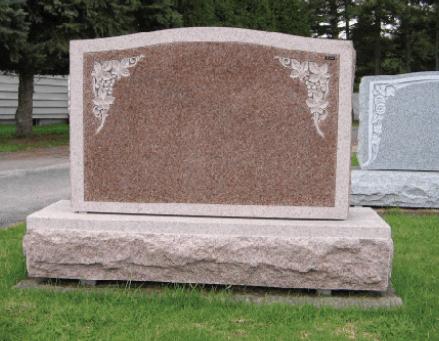
a convenient option for students to obtain their New Hampshire Rider Certificate, at their own pace, while learning key safety information important for riding both OHRVs and snowmobiles,” said Captain Michael Eastman, OHRV/ Snowmobile Education and Law Enforcement Coordinator for the New Hampshire Fish and Game Department. “The entire course can be taken on a smartphone, tablet, or computer and offers a fun approach to learning by using live-action video and interactive learning modules.” To register for an online safety class, visit www. offroad-ed.com/newhampshire
Even after course completion, all youth riders under the age of 14 must be accompanied by a licensed adult over the age of 18 when operating a snowmobile or OHRV, including on property belonging to their parents, grandparents, or guardians.
To further one’s safety and rider etiquette education, operators of all ages are invited to join one of the over 100 snowmobile and 26 OHRV clubs in New Hampshire. “Joining a club is a great way to learn about safe riding,

help support local landowners and help maintain trails for your own and others’ enjoyment,” Eastman said. For more information on how to become involved with a snowmobile club, visit www.nhsa.com. For OHRV club information, visit www.nhohva.org
In addition to safety education, NH Fish and Game Conservation Officers will be out on the trails this winter
conducting patrols to detect and apprehend impaired snowmobile operators, enforce speed limits, deter unlawful off-trail riding, and detect machines with modified exhausts. These ongoing initiatives will help to keep the state’s snowmobile trails open and safe for all outdoor enthusiasts during the upcoming seasons.
Hunters and all other outdoor enthusiasts are encouraged to put on bright orange clothing when they head afield this fall. Wearing a fluorescent orange hat, vest, or jacket makes you highly visible, one of several key safety precautions for hunters, hikers and others enjoying the autumn woods. Several hunting seasons are already underway in New Hampshire.
“Wearing blaze orange has statistically been shown to decrease hunting incidents across the country,” said Josh Mackay, who coordinates the Hunter Education Program at the New Hampshire Fish and Game Department.
Mackay stressed that, along with wearing blaze orange, the top safety rules for hunters are controlling the muzzle of your gun at all times and positively identifying your target—and
what’s beyond—100 percent of the time. New Hampshire has an excellent record for hunter safety, largely attributable to the state’s effective Hunter Education programs, which were made mandatory for all hunters beginning in the 1970s.

.com
Things to see and Things to do
It’s recommended that all outdoor enthusiasts heading into the woods this fall think safety by wearing blaze orange, sticking to established trails when hiking and reviewing the safe hiking guidelines at hikesafe.com. For more information on dates and details of New Hampshire’s hunting seasons, visit https://www.wildlife. nh.gov/hunting-nh/dates-and-seasons. To learn more about hunter safety visit https://www.wildlife.nh.gov/hunting-nh/hunting-safety.














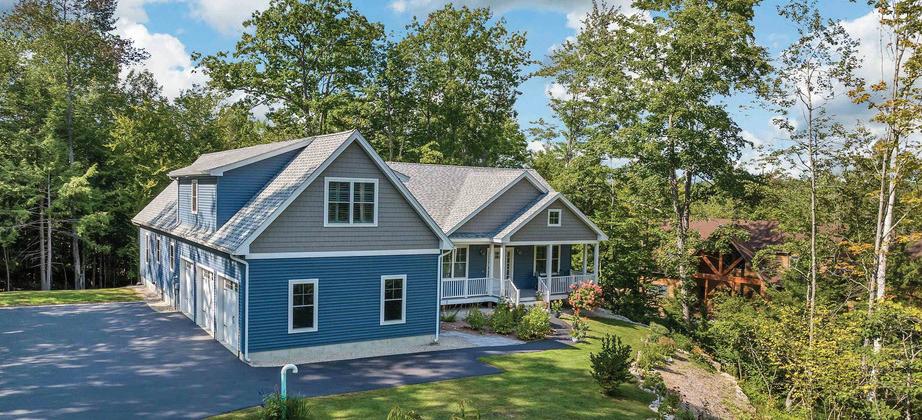
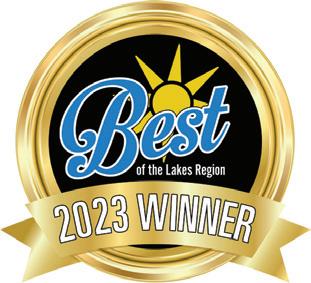


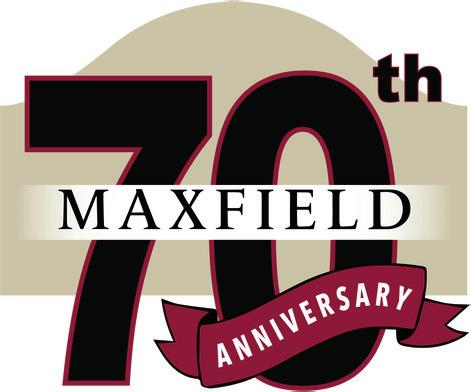










By Mark Okrant
Americans love wine. Look around in any quality sit-down restaurant, and there are likely to be dozens of people enjoying a glass. According to 2023 data, there were 11,691 wineries in the United States, and that number has been growing at a 3 to 4 percent rate annually. Nationwide, an estimated one-third of the US adult population drinks wine. Not surprisingly, California is the leader in wineries, wine production, and consumption. How did we reach this point? The truth is that production of wine dates back many millennia.
The oldest-known winery was discovered in a cave in Vayots Dzor, Armenia. Dated to 4100 BCE, the site contained a wine press, fermentation vats, jars, and cups. Amazingly, the oldest evidence of wine cultivation was found in what today is the country of Georgia, where grape wine production dates back even further to 6000 BCE. Other early sites include Persia (5000 BCE), Greece (4500 BCE), Armenia (4100 BCE), and Sicily (4000 BCE). However, China (7000 BCE) has the earliest claim for producing a fermented alcoholic beverage consisting of rice, honey, and fruit.
During ancient times, the Greeks and Romans coupled alcohol consumption with their religious practices, as ancient Greeks worshiped Dionysus, while the Roman god of wine was Bacchus. The consumption of ritual wine was also prevalent among the early Hebrews, then adopted subsequently by Christians. Centuries later, beginning with the voyages of Columbus, grape culture and wine-making were transported from the Old World to the New. European grape varieties were first brought to what is now Latin America by the Spanish conquistadors. Succeeding waves of immigrants, particularly in the 19th and early 20th centuries, imported French, Italian, and German varieties of grape.
During the late 19th century, a devastating insect-borne phylloxera blight attacked vineyards throughout Europe. It was soon found that Native American vines were immune to the pest; thus began a practice of grafting European grapevines to American rootstocks to protect vineyards from the insect. The first US vineyard and
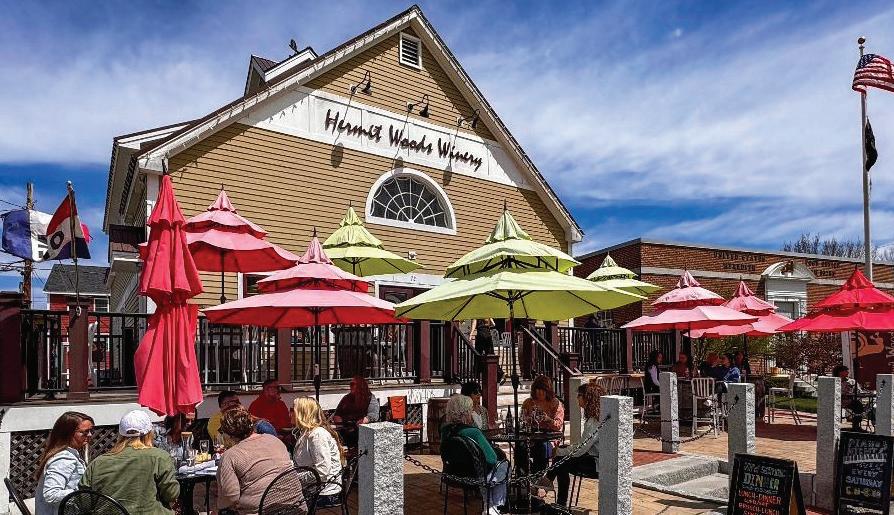
commercial winery was established in 1799 by Kentucky State Statute. However, Virginia is generally regarded as the birthplace of American wine. With more than 300 vineyards and wineries, Thomas Jefferson, one of our founding fathers, was particularly passionate about wine and made numerous attempts to cultivate European grape varieties at his estate in Monticello, Virginia. It was not until the early 19th century that American wine truly began to flourish.
Today, wine in this country is associated with the northern California counties of Napa, Sonoma, and Mendocino. This region produces a wide variety of wines, from inexpensive to high-quality blends. Most of the wine production in California is based on Old World grape varieties and their wine-growing regions cultivate specific grapes that have become closely identified with them.
Brotherhood Wines in Washingtonville, New York is credited with being the oldest ongoing vineyard in the US. John Jaques began growing native grapes in the backyard of his store as early as 1824. By 1835, he had established a large vineyard and was selling his grapes in the New York City area. As the price of grapes dropped, Jaques converted to wine production and released his first commercial vintage in 1839 under the label ‘Blooming Grove Winery.’
Here in the Granite State, there are an estimated thirty-eight wineries. Based upon a recent census, seven of those are situated in the Lakes Region. These are:
• Gilmanton Winery and Restaurant,
located at 528 Meadow Road in Gilmanton
• Black Bear Vineyard, located at 289 New Road in Salisbury
• Haunting Whisper Vineyards and Spirits, located at 77 Oak Ridge Road in Danbury
• Crazy Cat Winery and Café, located at 365 Lake Street in Bristol Whippletree Winery, located at 372 Turkey Street in Tamworth
• Front Four Cellars of NH, located at 13 Railroad Street in Wolfeboro Hermit Woods Winery and Sweet Mercy Kitchen, located at 72 Main Street in Meredith
In an effort to better understand the issues associated with operating a winery in central New Hampshire, we interviewed Bob Manley, one of three partners—along with vintner Ken Hardcastle and Chuck Lawrence—who founded Hermit Woods in Meredith in 2011. We asked Manley why he and his partners elected to produce wines that do not utilize grapes. Manley informed us that the classic grape used worldwide in wine production is the Vitis vinifera. “This is a Mediterranean grape; it doesn’t grow in New Hampshire due to the region’s extreme winter cold. For wineries in the north and east to use those grapes would necessitate an enormous expense to import them from around the world.” He went on to inform us that there is a North American grape, the Vitis labrusca, but it does not produce quality wines. What most wine in the Northeast is produced from are French or Minnesota hybrids—crosses between Vitis vinifera and Vitis labrusca, however, there are a few producers that have successful-
ly grown and produced some quality wines from the North American Vitis labrusca grapes, notably, the Niagara and Catawba grapes, to name a couple of the more common ones.
Manley told us, “The conditions here in the Northeast are less than ideal for growing hybrid grapes, resulting in many (though not all) wineries having to use chemicals to combat the effects of high humidity, which can lead to mildew, disease, and local pest issues. Any grapes that could grow in this region would necessitate using chemical sprays to prevent insect infestations. Those local wineries that choose to produce grape-based wine face a choice of importing California, Chile, or European grapes and processing them here. Otherwise, they would need to purchase juices produced from grapes grown in those same three areas, then process them locally into wine.”
Instead, Hermit Woods opted to produce quality wines using fruits that are indigenous to this region: apples, Aronia berries, autumn berries, blackberries, black currants, black pepper, black raspberries, wild blueberries, cardamoms, crab apples, corianders, cranberries, daylilies, elderberries, ginger, green tomatoes, honeyberries, hops, juniper berries, kiwi berries, knot weeds, peaches, pears, plums, quinces, raspberries, rhubarb, rose hips, staghorn sumac, and strawberries. As we talked, Manley extolled the ability of vintner Hardcastle to produce wines from fruit that drink like a cabernet, merlot, pinot noir, and other traditional wines. He uses whole fruits that are gently hand-processed, with minimal to zero chemical adjustments or additions. After blending, their wine is aged in oak barrels. Asked to name the Hermit Woods Winery’s most popular wines, Manley cited the very fruity Petite Blue, the barrel-aged Petite Blue Reserve, and their semi-dry Winnipesaukee Rose’.
One of the most positive aspects of this and other wineries within the region is the strong ties that have been established with the surrounding community. These businesses compensate their employees well. Also, a practice we need to see more of: wineries work closely with local farmers, the arts, and area businesses.


The critically acclaimed Beatles vs. Stones – A Musical Showdown production will be bringing its highly-anticipated Fall Tour 2024 to the Colonial Theatre Laconia on Thursday, December 5th at 7:30 pm. This unforgettable show takes the audience on a musical trip to the heart of the British Invasion to witness the greatest concert that never was – The Beatles and The Rolling Stones live together on stage. The Laconia show is part of a 125-city tour of the U.S., Canada and Mexico.
For the past decade, with more than 1800 performances across the country and abroad, this unforgettable production has been delighting audiences with their talent, warmth, humor and passion for the music of The Beatles and the Rolling Stones. A critic for the Los Angeles Times called it “the most unique tribute show in decades.”
The show pits Rolling Stones tribute band Satisfaction – the International Rolling Stones Show and rival Brit

boys Abbey Road in an all-out musical showdown for rock dominance. Hailed as the most exciting Rolling Stones tribute band, Satisfaction has been receiving delighted acclaim from audiences all over the country. Whether it’s the passion and fury with which they deliver the blues-soaked or groove-driven rock anthems, it’s their attention to detail and nuance that makes the Satisfaction performance a



















truly awe-inspiring part of the show. Utilizing the multi-instrumentalists at their disposal, Abbey Road re-created the songs in all their depth and glory with the studio overdubs that the Beatles themselves never performed live. They also touch on the deeper cuts that were seldom heard in concert. Abbey Road has amassed a strong national touring history and has honed their show to become one of the most mu-
sically and visually satisfying Beatle tribute acts in the world. “If the British Invasion had a house band in the 60s and beyond, hopefully, we’d be that band,” said Chris Paul Overall, who plays “Paul McCartney” in the show. “There’s always a special feeling for these shows— people dress up in 60’s costumes, wear Beatles and Rolling Stones clothing, and enjoy one another’s company during the concerts,” said Chris LeGrand, who plays “Mick” in the show. The Beatles vs. Stones show has become a phenomenon, widely regarded as the world’s greatest tribute concert. Tickets are $35$65 and may be purchased by phone at (800) 657-8774, at the Theatre Box Office and online at www.coloniallaconia.com. The show is appropriate for all ages. The Colonial Theatre is located at 609 Main St, Laconia, NH 03246. Tickets https://www.etix.com/ ticket/p/75389569/beatles-vsstones-laconia-colonial-theatre
































By Mark Okrant
If readers were asked who in New Hampshire holds the most legacy, the answer would most likely be Daniel Webster. Evidenced by multiple titles alone: Daniel Webster Highway, the (former) Daniel Webster College, Webster Hall at Phillips Exeter Acad-
emy (and one at Southern New Hampshire University), the special collections library at Dartmouth College, the statute of Webster representing New Hampshire in the National Statuary Hall Collection in the U.S. Capitol, the (former liberty ship) SS Daniel Webster, the Daniel Webster Farm in Frank-



lin, numerous inns and restaurants, and the statue poised front and center of the State House in Concord. Also, let us not forget Stephen Vincent Benet’s popular The Devil and Daniel Webster. What did Webster do to warrant so much attention? It might have been easier to describe what he did not do, as this is a one-thousand-word column, not a volume of hardcover books.
Daniel Webster was born in Salisbury, New Hampshire, in 1782. Before he died seventy years later, he served as a renowned lawyer and statesman. Webster represented New Hampshire and Massachusetts in the United States Congress and served as Secretary of State under three different presidents: William Henry Harrison, John Tyler, and Millard Fillmore.
While practicing law in New Hampshire, Webster was appointed to revise the state criminal code and devise regulations for state prisons. One of the most prominent American lawyers of the nineteenth century, Webster argued over two hundred cases before the United States Supreme Court, including two of significance: Dartmouth College v. Woodward, McCulloch v. Maryland, and Gibbons v. Ogden
During his heyday, Webster, Henry Clay, and John C. Calhoun were regarded as the Great Triumvirate, a tribute to their standing—albeit frequently at odds—in Washington, D.C. While opposing President Andrew Jackson, Webster joined the Whig Party, and ran unsuccessfully for the presidency in 1836.
Webster returned to the Senate in 1845 and immediately regained his status as a leader of the Whig Party. During this time, he maintained strong relations with his counterparts from the South over the issue of slavery; many Northerners believed his position was too soft. In 1850, President Fillmore appointed Webster as Secretary of State. Webster notably facilitated the passage of the Compromise of 1850, a monumental legislation that settled several territorial issues while enacting a fugitive slave law allowing runaways to be apprehended and returned to their masters. Not surprisingly, the latter compromise proved unpopular in much of the North and undermined Webster’s standing in the Granite State.
Throughout his career, Webster became an outspoken critic of the institution of slavery, which embroiled him in a broader political conflict: states’ rights versus federal control. One can imagine Webster taking a firm stance arguing issues such as the death penalty, assisted suicide, same-sex marriage, gun control, cannabis, and a woman’s right to choose. For those wondering how Webster would have preferred those issues to be addressed, one need only view the words he spoke at the time: “Liberty and Union, now and forever, one and inseparable.”
Another highlight of Webster’s career was the debate about the National • Daniel Webster continued on page 13

Bank, which President Andrew Jackson advocated. Webster led the Senate’s effort to prevent Jackson’s Secretary of the Treasury from removing government deposits. With the Bank’s charter due to expire in 1836, Jackson attempted to save his beloved bank through a compromise measure, but Democrats rejected his proposal. Webster played a key role in a censure resolution against Jackson that caused a permanent break between the two men.
While serving as Secretary of State during the Tyler administration, Webster addressed several key international issues. Foremost among these was American influence in the Pacific Ocean. With a strong effort from Webster, the United States completed its first treaty with China. Under Webster’s influence, the United States worked on a compromise with Britain to partition the Oregon Territory, subsequently announcing that it would oppose any attempt to colonize the Hawaiian Islands. Next, Webster addressed growing concern over the boundary between Canada and Maine. Ultimately, negotiations produced the Webster-Ashburton Treaty that delineated that portion of the U.S.-Canada border.
On a personal level, Webster had two marriages. In 1808, he married Grace Fletcher, a schoolteacher and the daughter of a New Hampshire clergyman. Between 1810 and 1822, Daniel and Grace had five children: Grace, Daniel (Fletcher), Julia, Edward, and Charles. Sadly, Grace and Charles died before reaching adulthood, while Webster’s wife, Grace, succumbed from cancer in January 1828. After the death
of his first wife, Webster was frequently the subject of rumors in Washington regarding his alleged promiscuity. Many suspected that the painter Sarah Goodridge, with whom he had a close relationship, was his mistress.
Webster suffered yet another loss when his brother, Ezekiel, died in April 1829. In December of that same year, Webster married Caroline LeRoy, the 32-year-old daughter of a New York merchant. They remained married until Webster’s death, and she lived until 1882. She and Webster had two children together—another daughter named Grace and a son named Noah Webster (not to be confused with Noah Webster who compiled, A Compendious Dictionary of the English Language).
By early 1852, Webster had begun to suffer from cirrhosis of the liver. His poor health made it increasingly difficult for him to serve as secretary of state. In September 1852, Webster returned to his Marshfield, Massachusetts estate, where his health continued to decline, this time due to a subdural hematoma. He died in Marshfield on October 24, 1852, and is buried in Winslow Cemetery near his estate. His last words were, “I still live.”
New Hampshire residents and visitors alike who seek to learn more about this incredible, albeit controversial statesman would benefit from a visit to The Elms, the Webster family home, situated off South Main Street in Franklin. The building and grounds are on the United States National Register of Historic Places and have been designated a National Historic Landmark. A state historic marker about Webster is located at the intersection of North Main Street and Capitol Street in Con-

The Gafney Library NH Humanities presents; Traditional Matryoshka Nested Doll Making on Thursday, November 7th at 6:00 pm in their community room. This beautifully illustrated interactive presentation by award-winning artist, scholar and educator Marina Forbes will feature the unique history and culture of Matryoshka nested doll making. Forbes will use a fully illustrated show and numerous exhibits, including examples of her own work and from her extensive collection. In this presentation, Forbes will examine the tapestry of the rich folk tradition and symbolism of the doll’s appearance and the interesting link between doll
making and other traditional art forms. Forbes will also touch upon the 1900 World Fair in Paris that made nested dolls and Fabergé eggs famous, followed by an illustrated tour of a working doll-making factory in rural Siberia depicting the various stages in the doll-making process. The presentation will conclude with a wonderful show of hundreds of examples of the finest Matryoshka artwork.
This event is made possible by New Hampshire Humanities. For more information, call Library Director Amy Swanson at 603-522-3401. Library programs are free and open to the public. 14 High Street Sanbornville, NH

.com

















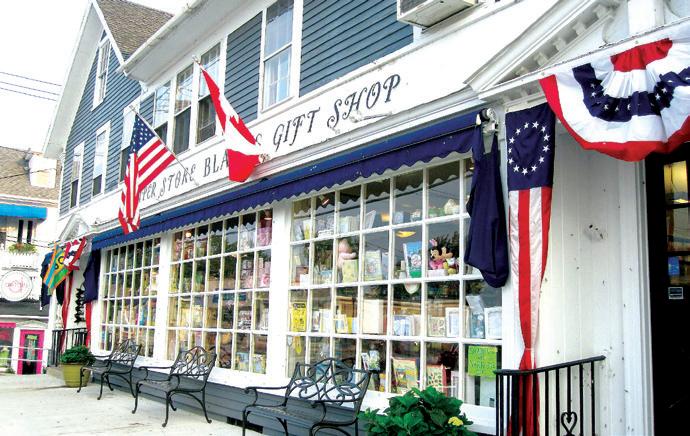




















































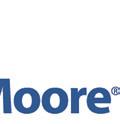













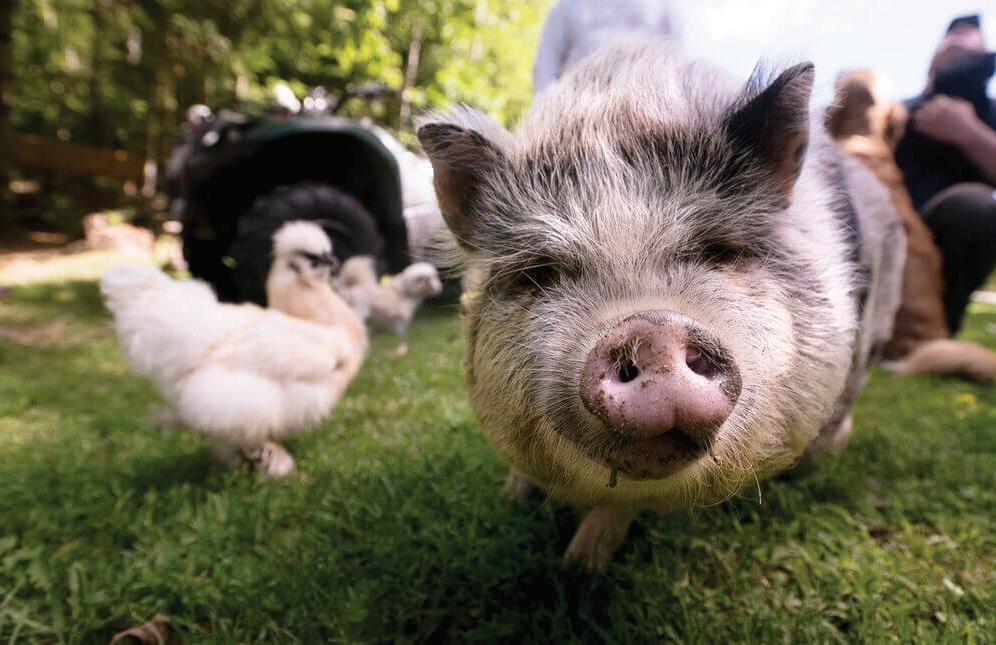



Through Nov. 11, A Place for the Sacred, Four Artists Reflect Upon a New and Difficult World, exhibit, The Lakes Gallery at Chi-Lin, 135 Eastman Rd., Laconia, 603-556-9384, www.thelakesgallery.com
Through Dec. 2, Art Works Charity Silent Auction, view items at the gallery and online, bid until Dec. 2. Benefits Starting Point and SAU-13 Pre-K Program, 132 Route 16, Chocorua, 603-323-8041, www.chocoruaartworks.com
Through Dec. 13, In the Path of Totality, Museum of the White Mountains, 603-535-3210, www.plymouth.edu/mwm
Nov. 1-3, 8-10, Bye Bye Birdie, The Village Players, 51 Glendon St., Wolfeboro, 603-569-9656, www.village-players.com
Nov. 4, Effectively Responding to Dementia Related Behaviors, 5 – 6 p.m., program on dementia skills, Gilford Public Library, 31 Potter Hill Rd., Gilford, 603-524-6042.

Grab breakfast or lunch at The Farmer’s Kitchen. We use only the freshest ingredients for our homemade creations. Come by today to try our:
daily breakfast & lunch specials!
444 NH Route 11 Farmington | 603-755-9900
Nov. 4, Support Hours: Leatherwork, noon – 2 p.m., Makers Mill, 23 Bay St., Wolfeboro, pre-register: 603-569-1500, www.makersmill.org
Nov. 5, Thanksgiving Pie Basket Workshop, 10 a.m.- 4 p.m. Make 1 9-inch diameter basket with weaver Mary Jeane Luckey, pre-register at ArtWorks Gallery, 132 Rt. 16, Chocorua, 603-323-8041, www.chocoruaartworks.com
Nov. 6, Plymouth Square Dance, 7:30 – 10 p.m., David millstone calls traditional squares, fiddle tuns by Joran Tirrell-Wysocki, pianist Sue Hunt, no experience necessary, all dances taught, complimentary Common Man goods and hot drinks, cash bar, Barn on the Pemi, 341 Daniel Webster Highway, Plymouth, 603-481-0789. (Also on Dec. 4, 2024; Jan. 2, Feb. 6, March 6 & April 3, 2025.)
Nov. 6, Support Hours: Digital Design & Fabrication, 4 - 6 p.m., Makers Mill, 23 Bay St., Wolfeboro, pre-register: 603-569-1500, www.makersmill.org
Nov. 6, Support Hours: Electronics, 5:30 – 7:30 p.m., Makers Mill, 23 Bay St., Wolfeboro, pre-register: 603-569-1500, www.makersmill.org
Nov. 6, Support Hours: Wood Shop 2024, noon – 2 p.m., Makers Mill, 23 Bay St., Wolfeboro, pre-register: 603-569-1500, www.makersmill.org
Nov. 8, Adult Craft Night with Doodlin’ Di, 6 – 8:30 p.m., Ossipee Town Hall, pre-registration/info.: Ossipee Parks and Recreation, Ossipee Parks & Recreation, 603-539-1307.
Nov. 8, Magic Rocks! Starring Illusionist Leon Etienne, 7:30 p.m., Rochester Opera House, 31 Wakefield St., Rochester, tickets: 603-335-1992, www.rochesteroperahouse.com



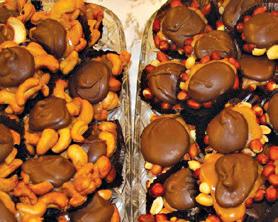
Nov. 9, Abenaki Outing Club Ski & Skate Sale, 9 a.m. – 2 p.m., by Abenaki Ski Team, new & used skis, skates, boots, snowshoes & more, Kingswood Regional High School gym, 396 South Main St., Wolfeboro, www.abenakiskiteam.org
Nov. 9, Covered Bridges Near Center Harbor, Past & Present, 10:30 a.m. –noon, free, presentation by Kim Varney Chandler, author and photographer of Covered Bridges of New Hampshire, Nichols Memorial Library, 35 Plymouth St., Center Harbor, pre-register by 11/7: centerharborlibrary@gmail.com or 603-253-6950.



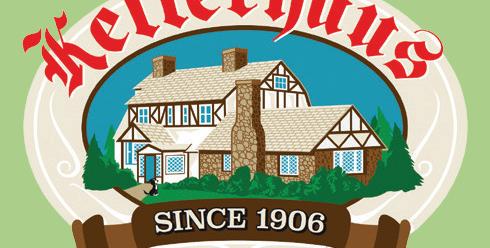
Nov. 9, Family Craft: Paper Strip Pumpkins, 10 – 11:30 a.m., create festive pumpkins, ages 6-11, Laconia Public Library, 695 N. Main St., Laconia, 603524-4775.
Nov. 9, Furniture Decorating with Specialty Techniques, 10 a.m. - 1 p.m., Makers Mill, 23 Bay St., Wolfeboro, pre-register: 603-569-1500, www.makersmill.org
Nov. 9, Gemstone Stacking Rings, 10 a.m. - 1 p.m., Makers Mill, 23 Bay St., Wolfeboro, pre-register: 603-569-1500, www.makersmill.org





Nov. 9, Intermediate Soapmaking: Layered Soap, 10 a.m. – 1 p.m., age 16 & up, Prescott Farm Environmental Education Center, 928 White Oaks Road, Laconia, www.prescottfarm.org. Pre-registration is necessary: 603-366-5695.
Nov. 9, Jimmy Dunn, comedian, 8 p.m., Rochester Opera House, 31 Wakefield St., Rochester, tickets: 603-335-1992, www.rochesteroperahouse.com
Nov. 10, Feather Wool Tree with Jean Read workshop, 9 a.m. - 4 p.m., sign up by Nov. 4, League of NH Craftsmen Meredith Fine Craft Gallery, 279 Daniel Webster Highway, Meredith, 603-279-7920.
Nov. 12, Fall Leaf Votive Jars, 3:30 - 4:30 p.m., ages 9-18, create a votive jar with tissue paper and autumn leaves, Laconia Public Library, 695 N. Main St., Laconia, 603-524-4775.
Nov. 12, Friends’ Crafts with Linda: Winter Wreaths, 10 a.m. – noon, make a wreath with winter fabrics, registration required, free program, Moultonborough Public Library, 4 Holland St., Moultonborough, 603-476-8895, www. moultonboroughlibrary.org.


Nov. 12, History of Meredith Bay, 6:30 p.m., speaker John Hopper, Ph.D., author of The History of Bear Island, Community Center, 1 Circle Drive, Meredith, 603-279-1190.
Nov. 12, Make Your Own Watercolor Holiday Cards, 2:30 – 4:30 or 6 – 8 p.m., with instructor Pat Edsall, pre-registration closes the day before the event, Castle in the Clouds, Rte. 171, Moultonborough, 603-476-5900, www.castleintheclouds.org
Nov. 13, An African Safari, 6:30 – 7:30 p.m., presentation by June Aprille and Nelson O’Bryan of video clips and still photos of safari to Zambia’s South Luangwa national park, Cook Memorial Library, 93 Main St., Tamworth, 603323-8510, www.tamworthlibrary.org.
Nov. 13, Little Black Dress Evening, 6:29 – 8:30 p.m., The Kalled Gallery, 33 North Main St., Wolfeboro, 603-569-3994, www.kalledjewelrystudio.com.
Nov. 14, Lonestar, 7:30 p.m., Colonial Theatre, 609 Main St., Laconia, tickets/ info: 800-657-8774, www.coloniallaconia.com.
Nov. 14, Mountain Voices – Are Alaskan Huskies a Vulnerable Species?, Climate Impacts on Dog Teams, 6 – 7:30 p.m., free, Museum of the White Mountains, 603-535-3210, www.plymouth.edu/mwm
Nov. 14, The Abduction of Betty and Barney Hill, 6 – 7 p.m., Professor and Special Collections Librarian Elizabeth Slomba will talk about Betty and Barney Hill, how this could have happened in New Hampshire, and the use of the papers for research, Laconia Public Library, 695 N. Main St., Laconia, 603524-4775.
Nov. 15, Dancing Dream: The Tribute to ABBA, 8 p.m., Rochester Opera House, 31 Wakefield St., Rochester, tickets: 603-335-1992, www.rochesteroperahouse.com
Nov. 15, Kris Allen, 7:30 p.m., Flying Monkey Movie & Performance Center, 39 Main St., Plymouth, tickets/info: www.flyingmonkeynh.com, 603-536-2551.
Nov. 15, Parents Night Out, 4 – 8:30 p.m., Ossipee Town Hall, Bub Avery Memorial Gym, pre-registration required, children in grades 1-6, drop of your kids for night of activities, info.: Ossipee Parks & Recreation, 603-539-1307.
Nov. 16, 1863 Thanksgiving on the Farm, 10 a.m. - 4 p.m., NH Farm Museum,1305 White Mt. Highway, Milton, 603-652-7840, www.nhfarmmuseum. org
Nov. 16, Candlemaking Workshop, 2 – 3:30 p.m., with beekeeper Samantha Stevens, pre-registration closes midnight on Nov. 9, Castle in the Clouds, Rte. 171, Moultonborough, 603-476-5900, www.castleintheclouds.org
Nov. 16, Felted Soap, 1 - 3 p.m., age 16 & up, Prescott Farm Environmental Education Center, 928 White Oaks Road, Laconia, www.prescottfarm.org Pre-registration is necessary: 603-366-5695.
Nov. 16, Funny Women of a Certain Age, 7:30 p.m., Flying Monkey Movie & Performance Center, 39 Main St., Plymouth, tickets/info: www.flyingmonkeynh.com, 603-536-2551.
Nov. 16, Holiday Yeast Breads, 10 a.m. – 2 p.m., age 16 & up, Prescott Farm Environmental Education Center, 928 White Oaks Road, Laconia, www. prescottfarm.org. Pre-registration is necessary: 603-366-5695.
Nov. 16, Leary Field & Forest Clean Up (Farmington), 9 a.m. – 12:30 p.m., volunteer project by Moose Mountain Regional Greenways, www.mmrgnh. org., 603-473-2020.
Nov. 16, Purple Mountains – Live Free or Die, 4:30 p.m., 30 minute documentary with award-winning snowboarder Jeremy Jones of NH, Anderson Hall, Brewster Academy, 80 Academy Drive, Wolfeboro, raffle, bake sale and more, presented by Abenaki Ski Team, www.abenakiskiteam.org.
Nov. 20, Meet the Author: Sophia Collins, 3 – 4 p.m., local teen author Sophia Collie book signing of her new release, Billows of Wrath and Betrayal, a YA Fantasy about the royal teens of three distinct islands joining forces. Sophia will also discuss writing and the publishing process. Books available for purchase, Laconia Public Library, 695 N. Main St., Laconia, 603-524-4775.
Nov. 20, Robert Frost’s NH: Rural Backwardness, Agricultural Improvements and the History of Education, 12:30 – 1:30 p.m., lecture, free, Museum of the White Mountains, 603-535-3210, www.plymouth.edu/mwm
Nov. 20, Rocky Mountain High Experience: A John Denver Christmas starring Rick Schuler, 7:30 p.m., Colonial Theatre, 609 Main St., Laconia, tickets/info: 800-657-8774, www.coloniallaconia.com.
Nov. 21-23, Branch & Bloom Holiday Open House, (11/21 & 22: 9 a.m. –5:30 p.m.; 11/23: 9 a.m. – 2 p.m., 35 Center St., Suite 5, Wolfeboro Falls, 603569-1347, www.branchandbloomnh.com.
Nov. 22, Sherwood Frazier Fine Art Photography Reception, 3 – 4 p.m., Upper Exhibit Gallery, Laconia Public Library, 695 N. Main St., Laconia, 603524-4775.





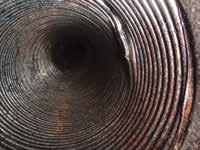























Nov. 22, The Martin Sexton Abbey Road Show, 8 p.m., Rochester Opera House, 31 Wakefield St., Rochester, tickets: 603-335-1992, www.rochesteroperahouse.com
Nov. 23, 32nd Annual Turkey Trot, check in: 8 a.m., start at Railroad Station, Wolfeboro, 604-569-5639, proceeds benefit Wolfeboro Lions Sight & Hearing Fun.
Nov. 23, Jimmy Failla, 8 p.m., Colonial Theatre, 609 Main St., Laconia, tickets/info: 800-657-8774, www.coloniallaconia.com.
Nov. 23, Jimmy Kenny and the Pirate Beach Band, 7:30 p.m., Flying Monkey Movie & Performance Center, 39 Main St., Plymouth, tickets/info: www. flyingmonkeynh.com, 603-536-2551.
Nov. 23, Molly Hatchett, 8 p.m., Rochester Opera House, 31 Wakefield St., Rochester, tickets: 603-335-1992, www.rochesteroperahouse.com
Nov. 23, Pie/Bake Sale, 8 a.m. – 1 p.m., snacks, coffee, corn chowder, Union Congregational Church, 80 Main St., Union, benefit Church Fellowship Mission, 603-473-2727.
Nov. 23, 24, 30 & Dec. 1, 7, 8, Christmas at the Castle, Home for the Holidays, 10 a.m. - 4 p.m., tour holiday decorated Castle, refreshments, Artisan Fair and more, tickets at the door and online, Castle in the Clouds, Rte. 171, Moultonborough, 603-476-5900, www.castleintheclouds.org. (Preview party Fri., November 22 4 – 7 p.m.)
Nov. 26, Open Mic: An Evening of Poetry and Music, 6 – 8 p.m., all writers, musicians and poets welcome to perform, free, audience also welcome, Moultonborough Public Library, 4 Holland St., Moultonborough, 603-476-8895, www.moultonboroughlibrary.org.
ArtWorks Gallery & Fine Crafts/CCAC, art, workshops and events, open year-round with seasonal hours, 603-323-8041, 132 Rte. 16, Chocorua, www. chocoruaartworks.com
Bad Mom Night, every Thurs., Trenta, 30 Middleton Rd., Wolfeboro, 603-5151068, www.trentanh.com.
Belknap Mill, 25 Beacon St. East, Laconia, gallery and textile museum, events and programs, 603-524-8813, www.belknapmill.org.
Breakfast Buffet, 7 a.m. - 11 a.m. Wolfeboro Masonic Lodge, 35 Trotting Track Rd, Wolfeboro. Pancakes, French toast, scrambled eggs, home fries, bacon, sausage, omelets made-to-order, Eggs Benedict, biscuit and gravy, juice, and coffee. Served the second Sunday of every month. 603-569-4637
Canterbury Shaker Village, walking trails, Shaker Rd., Canterbury, 603-7839511, www.shakers.org
Castle in the Clouds, Rte. 171, holiday and workshop events, Moultonborough, 603-476-5900, www.castleintheclouds.org.
Chapman Sanctuary and Visny Woods, nature trails open for hiking, 740 Mt. Israel Rd., Center Sandwich, 603-284-6428, www.chapmansanctuaryvisnywoods.com.
Chocorua Lake Basin View Lot, mountain views, benches for seating, free, www.chocorualake.org.
Coffee Hour, 10 – 11 a.m., coffee, tea and snacks, Effingham Public Library, 30 Town House Rd., Effingham, 603-539-1537, Effingham.lib.nh.us.
Country Village Quilt Guild, 1:30 - 3:30 p.m., meets first and third Wednesday of each month, Public Safety Building (back entrance to Police and Fire Dept.), Rte. 25, Moultonborough, countryvillagequilters@gmail.com.
Dam Brewhouse, events, 1323 NH Rte. 175, Campton, 603-726-4500, www. dambrewhouse.com.
Family Craft Day, 10 a.m. – 2 p.m., first Saturday of each month, free and fun for all ages, Belknap Mill, 25 Beacon St. East, Laconia, 603-524-8813, www. belknapmill.org.
First Friday Receptions, through Dec., 5 - 7 p.m., refreshments, conversation & art, ArtWorks Gallery & Fine Crafts, 603-323-8041, 132 Rte. 16, Chocorua, www.chocoruaartworks.com
Frank Bolles Nature Reserve, walking trails, off Rt. 16 to Chocorua Lake Rd., Chocorua, www.chocorualake.org.
Guided Group Tour, history and machines of the historic Belknap Mill, 25 Beacon St. East, Laconia, pre-register: jill@belknapmill.org, 603-524-8813, Monday-Friday.
In the Round, 8:45 a.m., Sundays, thought-provoking topics related to tolerance, Benz Center, Sandwich, 603-284-7211.





Indoor Pickleball, 5 p.m., Sandwich Central School gym, Sandwich, every Tues., Wed. & Fri., parksandrec@sandwichnh.org
Kirkwood Gardens, free, open to public year round, Rt. 3, Holderness, tour the gardens, www.nhnature.org, 603-968-7194.
Ladies of the Lake Quilt Guild, 10 a.m. - 2 p.m., meets second and fourth Wednesday of each month, First Congregational Church, 115 Main St., Wolfeboro. A second group meets Mondays from 10 a.m. – 2 p.m. at the Community Center, 22 Lehner St., Wolfeboro, www.llqg.net
Lakes Region Art Association, exhibits and classes, Suite 300, Tanger Outlet, Rte. 3, Tilton, 603-998-0029, www.lraanh.org
Lakes Region Curling Association, fall & winter leagues, matches at Pop Whalen Ice & Arts Center, Wolfeboro, Sundays 4:30 – 6:30 p.m., 84 S. Main St., 603-569-5639.
Laverack Nature Trail at Hawkins Brook, nature trail on boardwalk, free, trail starts to the left of Meredith Village Savings Bank, Rte. 25, Meredith, 603279-9015.
League of NH Craftsmen Meredith Fine Craft Gallery, handmade crafts and art for sale, workshops, 279 Daniel Webster Highway, Meredith, 603-279-7920. Loon Center, walking trails, 183 Lees Mill Rd., Moultonborough, 603-4765666, www.loon.org
Makers Mill, a variety of workshops, arts and crafts classes and more, 23 Bay St., Wolfeboro, 603-569-1500, www.makersmill.org
Making Strides, 8 – 9 a.m., drop-in walking for groups or singles, Ossipee Town Hall, no pre-registration required, 55 Main St., Center Ossipee, takes place various times: www.ossipee.recdesk.com.
Meredith Public Library Bookstore, run by Friends of the Meredith Library, open weekly: Wed. 10 a.m. – 6 p.m., Thurs. & Fri. 10 a.m.- 4 p.m., Sat. 9 a.m. – 1:30 p.m., lower level, Meredith Public Library, 91 Main St., Meredith, 603279-4303, www.meredithlibrary.org.
New England Racing Museum, 10 a.m. – 4 p.m., open Saturdays, 922 NH Rte. 106 N., Loudon, www.NEMSMUSEUM.com
Outdoor Nature-Based Storytime for Young Children, 10:30 a.m. - 1:30 p.m., Tuesdays, Cook Memorial Library, 93 Main St., Tamworth, 603-3238510, www.tamworthlibrary.org.
Plymouth Square Dance, 7:30 – 10 p.m., David millstone calls traditional squares, fiddle tunes by Jordan Tirrell-Wysocki, pianist Sue Hunt, no experience necessary, all dances taught, complimentary Common Man goodies and hot drinks, cash bar, Barn on the Pemi, 341 Daniel Webster Highway, Plymouth, 603-481-0789. (Takes place Nov. 6 & Dec. 4, 2024; Jan. 2, Feb. 6, March 6 & April 3, 2025.)
Prescott Farm Environmental Education Center, 928 White Oaks Road, Laconia, www.prescottfarm.org. Call ahead for event information and to inquire if program pre-registration is necessary: 603-366-5695.
Quilting Group, 1 - 4 p.m., meets every 2 weeks, Ossipee Public Library, 74 Main St., Ossipee, schedule/info: 603-539-6390
Remick Country Doctor Museum & Farm, events, 58 Cleveland Hill Rd., Tamworth, 603-323-7591, www.remickmuseum.org.
Roller Skating Night, 5 p.m., Mondays, bring your own skates, for age 18 and up, Ossipee Town Hall, 55 Main St., Ossipee, info/updates: 603-539-1307, www.ossipee.org.
Rug Hookers, 10 a.m. – noon, meets Tuesdays, Tuftonboro Free Library, 221 Middle Rd., Rt. 109A, Tuftonboro, 603-569-4256.
Sculpture Walk, tours of outdoor sculptures around downtown/lakeside areas of Meredith, free, Greater Meredith Program, maps: 603-279-9015.
Song and Jam Circle, 6:30 – 8 p.m., community created jams and song circle, 3rd Monday of each month, Runnells Hall, 25 Deer Hill Rd., Tamworth, free, bring your favorite instruments, Arts Council of Tamworth, 603-584-2712, www.artstamworth.org
Tamworth Farmer’s Market, 9 a.m. - noon, Saturdays, 30 Tamworth Road, Tamworth, www.tamworthfarmersmarket.org
Tamworth History Center, 25 Great Hill Rd., Tamworth, info: www.tamworthhistorycenter.org.
Tuftonboro Country Bluegrass and Gospel Jam, 6:30 - 9:30 p.m., Tuesdays, donation requested, Old White Church, Rte. 109A, Center Tuftonboro, across from Tuftonboro General Store, 603-569-3861
Wolfeboro Table Tennis, meets Wednesdays from 4 – 6 p.m., in basement of All Saints Church, Wolfeboro, all skill levels welcome, $5 admission charge each week, info: 603-520-5651.





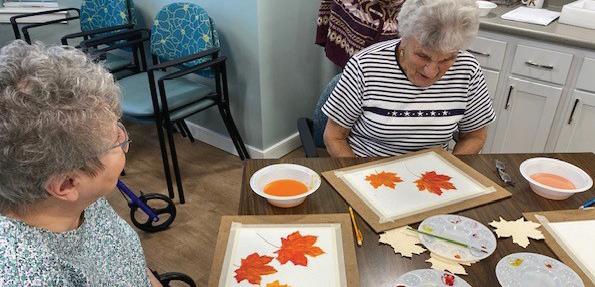







By Lee Caldwell
With its mission to “protect Newfound Lake and its watershed,” the Newfound Lake Region Association (NLRA) has been one of the stewards of the pristine Newfound Lake for more than 50 years. Newfound Lake, considered to be one of the cleanest lakes in the world, is located in the towns of Bristol, Bridgewater, Hebron, and Alexandria. Covering more than 4,000 acres, the lake is fed by its tributaries, the Cockermouth River the Fowler River and by eight freshwater springs. Its outflow is the Newfound River.
According to the NLRA, threats to the lake are growing. “Stormwater pollution washes into our waterways and lowers water quality. Invasive aquatic species threaten lake recreation, lowers water quality and decreases property values. Toxic cyanobacteria have been ravaging lakes across the state,” the organization states.
One of NLRA’s latest projects is the fundraising and construction of a new Grey Rocks Conservation Center. The building shell is already 90 percent funded. It will be located at the Grey Rocks Conservation Area on North Shore Road in Hebron. Groundbreaking for the new center is planned for the fall of 2024. The Grey Rocks Conservation Area has 1.5 miles of trails leading to Newfound Lake and along the Cockermouth River, as well as a non-motorized public boat launch. Rebecca Hanson, executive director of the Newfound Lake Region Associa-

tion, explains, “We need more space to carry out our work and our educational stewardship. The new building will be 3,400 square feet and two stories high. It will enhance the user experience by providing an interpretive experience. It will also be a community space.”
Further information provided by the NLRA states that the new Grey Rocks Conservation Center will “expand opportunities for participation in educational programming around watershed science and conservation for people of every age, ability, and socioeconomic status; broaden the visibility of the NLRA and our services, engaging the community in watershed exploration in all four seasons and any weather; strengthen our scientific capabilities
and response time to emerging conservation threats; build out our volunteer force, and remove barriers to volunteer participation.”
The NLRA sees the center as a “hub for innovative watershed science, a community gathering place for collaboration, and educational space for schools and visitors and an example of sustainable development. It will showcase leadership in watershed conservation, provide a physical space for the community to interact with our natural environment, and ultimately advance the protection of Newfound Lake and its watershed.”
The project will feature a water quality lab, stormwater landscaping, pollinator gardens, enhanced site ac-
cessibility, exploratory activities, and interactive exhibits. The building itself will be energy-efficient and have a solar array.
Rebecca lists off the programs and services that the NLRA currently provides, starting with water quality.
“For 40 years, we have been monitoring water quality in the lake. We try to maintain and improve the water quality by partnering with watershed towns to aid in stormwater management. Stormwater is one of the biggest threats to Newfound Lake. We have volunteers who monitor the lake and its tributaries for water quality. We work with watershed property owners to assess stormwater problems and help those owners to design and implement solutions.”
She continues by talking about education. “We do education and outreach for people of all ages. During the summer months, we do Newfound EcoTour pontoon boat rides that tour Newfound Lake, focusing on the ecological and environmental factors that affect the lake. Our programs include library story-times, a summer story walk, guided hikes, guided paddles, a multitude of educational events (over 96 free community programs), classroom visits that introduce local students to watershed science and conservation principles, and nature stations showing aspects of the natural world.”
“In addition, in 2023, NLRA Lake Hosts (volunteer invasive “weed” spe-
• NLRA
Continued on page 20


















Continued from page 18
cies watchers) performed 2,368 boat inspections at both Wellington State Park and the Great Rocks Conservation Area, preventing aquatic invasive species from entering Newfound Lake. Newfound Lake is the largest lake in New Hampshire with no invasive species.”
Another project of the NLRA is to encourage property owners to plant native species that are beneficial for both pollinators and wildlife. An example of that may be seen at the Grey Rocks Conservation Area, where bees and butterflies enjoy the nectar of native flowers. Two sycamore trees have been planted at the entrance to the trail, and Rebecca explains, “We are planting trees for the long term.”
A stroll along the conservation area’s trails starts along a little inlet of Newfound Lake (the site of a former marina.) Following the trail, one can watch the kayak/canoe paddlers launching from the boat launch. In the summer, the tadpoles are numerous. Benches are strategically placed for contempla-
tion of the water. The main trail ends at a pavilion where Newfound Lake and the Cockermouth River converge. A separate intersecting trail leads into a somewhat marshy wooded area that meanders close to the Cockermouth River.
The NLRA has a goal of expanding land conservation, with a target of conserving 30 percent of the watershed’s land by 2030. To date, 25 percent of the land in the Newfound Lake Watershed is permanently protected. “Volunteers are crucial to the NLRA,” says Rebecca. “Most of our volunteers come from the local communities and we have put out a newsletter to recruit more volunteers. We have many conservation volunteer opportunities. Volunteers are critical to our mission to protect Newfound. They lead education programs, monitor water quality, guard against invasive aquatic species, maintain Grey Rocks Conservation Area, provide administrative support, provide governance, and participate in strategic planning.” The NLRA is a year-round organization with 900-plus members. For more information, go to the website NewfoundLake.org or email info@





Each November, millions of people recognize the service and sacrifice of military veterans on Veterans Day. Initially commemorated as Armistice Day but renamed Veterans Day in the United States in 1954, the holiday is a federal holiday throughout the country.

The first Armistice Day was observed in 1919. Despite that lengthy history, the general public may still have questions about Veterans Day. When is Veterans Day observed?
The U.S. Department of Veterans Affairs notes that Veterans Day is always observed officially on November 11, regardless of which day of the week that happens to be. In 2023, Veterans Day is Saturday, November 11. Because Veterans Day falls on a Saturday in 2023, the federal observation date is Friday, November 10.
Why is November 11 so significant?
November 11 is a significant day in world history because it marks the signing of the armistice between the Allies of World War I and Germany at 5:45 a.m. on November 11, 1918.
Though the formal peace treaty, the Treaty of Versailles, was not signed until 1919 and hostilities between the sides continued for hours after the armistice was signed, the day is still viewed as the end of World War I. What distinguishes Veterans Day from Memorial Day?
The VA notes that Veterans Day honors all those individuals who served honorably in the miliary during both wartime and peacetime. Memorial Day is a day to honor and remember military personnel who died in the service of their country, particularly those who lost their lives in battle or as a result of wounds sustained in battle.
What is the significance of red poppies?
Red poppies are ubiquitous on Memorial Day, but they’re also visible on Veterans Day. Though it’s not taboo to wear red poppies on Veterans Day, it’s a tradition that aligns more with Memorial Day. That’s because the poppies are typically worn to honor fallen military personnel. A 1915 poem written by a Canadian Lieutenant Colonel named

find


John McCrae referred to the fields of poppies growing around the graves of World War I soldiers in Flanders.
Do other countries honor their military veterans?
Many countries across the globe honor their military veterans, and many do so on November 11 as well. For example, Canadians and Australians observe Remembrance Day in honor of their
nation’s respective veterans on November 11. Great Britain observes Remembrance Day on the Sunday nearest to November 11.
Veterans Day is a day to honor and commemorate the brave men and women who have honorably served in the U.S. military during wartime and peacetime. ~ Metro
The holiday season is a time of year when shopping takes center stage. While online giants and big box retailers seem to be everywhere, offering an endless array of products with the convenience of low prices, small businesses provide a range of benefits that go far beyond the ease of a mouse click or mountains of merchandise. Shopping local retailers is more than just a transaction — it is crucial for maintaining the economic foundation of local communities. Let’s take a look at the many ways it pays to shop small businesses during the holidays and all year long.
• Strengthen the local economy: A large percentage of the money spent at small businesses stays in the community. That’s because these businesses often are owned and operated by local residents who are invested in the community themselves. Various studies indicate that for every $100 spent at a small business, roughly $70 stays in the community.
• Enhanced customer service: Owners and employees of small businesses have a keen interest in keeping customers happy. They often do so by providing superior customer service. Tailoring recommendations, exhibiting a willingness to accommodate special requests, offering a more engaging shopping experience, and being more friendly and connected with regular customers sets many small businesses
apart.
• Support the community: Small businesses serve the community through the products and services they offer, and many give back in other ways as well. Small, locally owned businesses often sponsor schools, sports teams and charities. This helps foster a sense of belonging in the community.
• Innovative offerings: Small businesses are not beholden to corporate policies or franchise restrictions, so they can more readily bring new life to existing ideas and trends. Small businesses can offer customers different options that larger retailers cannot match.
• Job creation: Small businesses employ a significant percentage of the workforce and frequently provide jobs that might not be available in larger corporate settings. The U.S. Small Business Administration Office of Advocacy says small businesses have generated 12.9 million net new jobs over the past 25 years, accounting for two out of every three jobs added to the U.S. economy. Keeping residents working helps strengthen local communities.
There are numerous benefits to shopping at small businesses this Small Business Saturday and throughout the year. Such firms help to establish a more resilient, diverse and bustling local community. ~ Metro











